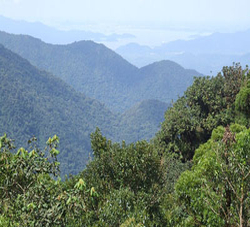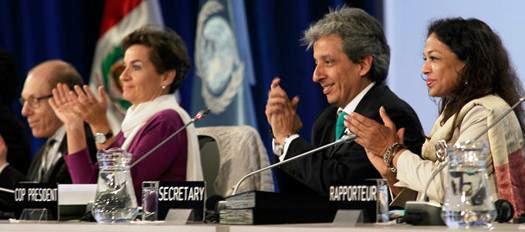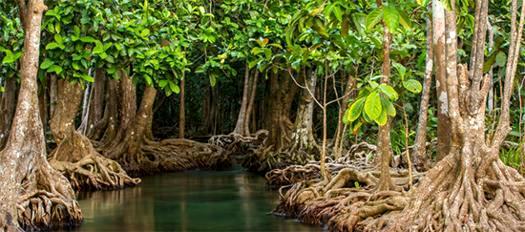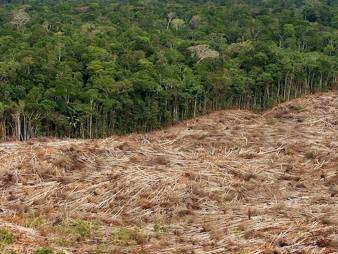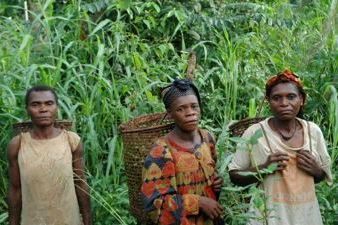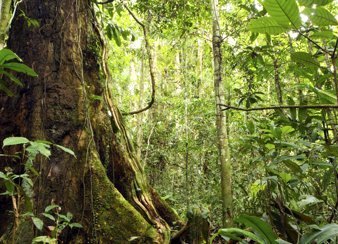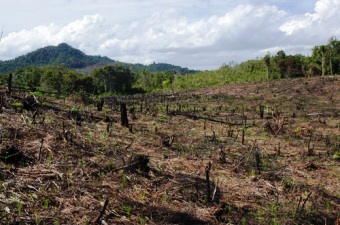
Washington, D.C. – A study published in the July 17 issue of the journal PLOS ONE found that more than 80% of tropical forests in Malaysian Borneo have been heavily impacted by logging.
The Malaysian states of Sabah and Sarawak were already thought to be global hotspots of forest loss and degradation due to timber and oil palm industries, but the rates and patterns of change have remained poorly measured by conventional field or satellite approaches. A research team from the University of Tasmania, University of Papua New Guinea, and the Carnegie Institution for Science documented the full extent of logging in this region.
The team used the Carnegie Landsat Analysis System-lite (CLASlite) to reveal the vast and previously unmapped extent of heavily logged forest. CLASlite’s high-resolution satellite imaging uncovered logging roads in Brunei and in the Malaysian states of Sabah and Sarawak on the island of Borneo.
CLASlite, developed by Carnegie’s Greg Asner and team, has the unique ability to convert satellite images of seemingly dense tropical forest cover into highly detailed maps of deforestation and forest degradation. The user-friendly monitoring system has been made available to hundreds of governments, non-governmental organizations, and academic institutions for use in mapping tropical forests.
Analysis of satellite imagery collected from 1990 and 2009 over Malaysian Borneo showed approximately 226,000 miles (364,000 km) of roads constructed throughout the forests of this region. Nearly 80% of the land surface of Sabah and Sarawak was impacted by previously undocumented, high-impact logging or clearing operations. This finding contrasted strongly with neighboring Brunei, where 54% of the land area maintained intact unlogged forest.
Team leader Jane Bryan said, “There is a crisis in tropical forest ecosystems worldwide, and our work documents the extent of the crisis on Malaysian Borneo. Only small areas of intact forest remain in Malaysian Borneo, because so much has been heavily logged or cleared for timber or oil palm production. Rainforests, that previously contained lots of big old trees, which store carbon and support a diverse ecosystem, are being replaced with oil palm or timber plantations, or hollowed out by logging.”
Only 8% and 3% of land area in Sabah and Sarawak, respectively, was covered by intact forests in designated protected areas. Very few forest ecosystems remain intact in Sabah or Sarawak. But Brunei has largely excluded industrial logging from its borders and has been comparatively successful in protecting its forests.
Greg Asner commented, “The results are sobering. The problem with previous monitoring reports is that they have been based on satellite mapping methods that have missed most of the forest degradation in Malaysian Borneo, and elsewhere throughout the tropics. I’m talking about heavy logging that leaves a wake of forest degradation, even though the area may still look like forest in conventional satellite imagery. With the CLASlite system, we can see the effects of logging on the inner canopy of the forest. The system revealed extremely wide-spread degradation in this case.”

Co-author of the study Phil Shearman said, “The extent of logging in Sabah and Sarawak documented in our work is breathtaking. The logging industry has penetrated right into the heart of Borneo and very little rainforest remains untouched by logging or clearfell in Malaysian Borneo. Brunei provides a stunning contrast. Most of Brunei’s forests are still intact, as a result of largely excluding the logging industry from its borders. The situation in these tropical forests is now so severe that any further sacrifice of intact ecosystems to the logging industry should be off the table.”
This work was an international collaboration between the School of Geography and Environmental Studies at the University of Tasmania, in Hobart, Australia; the University of Papua New Guinea Remote Sensing Centre, in Port Moresby, Papua New Guinea; and the Department of Global Ecology, at the Carnegie Institution for Science, California. The CLASlite capacity building project is made possible by the Gordon and Betty Moore Foundation.
Check the following link to read/download the Full Study – “Extreme Differences in Forest Degradation in Borneo: Comparing Practices in Sarawak, Sabah, and Brunei”:
http://www.plosone.org/article/info%3Adoi%2F10.1371%2Fjournal.pone.0069679
Source: Carnegie Institution for Science.

